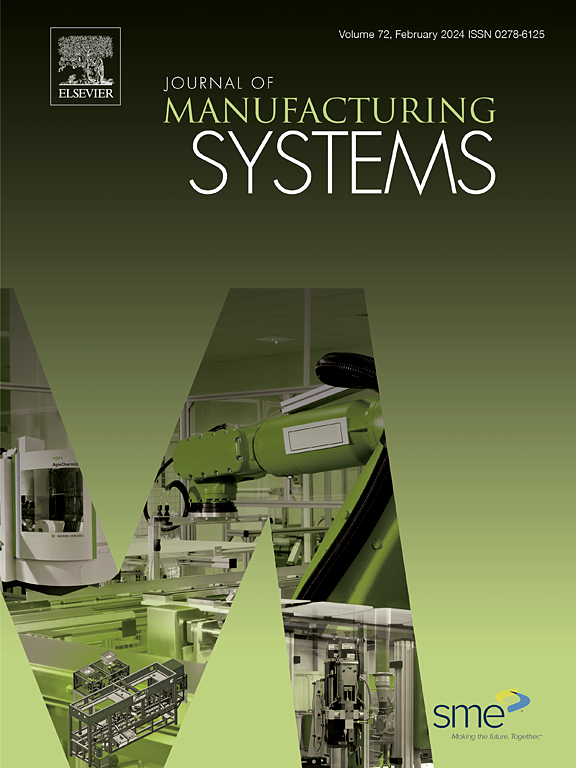H2R Bridge: Transferring vision-language models to few-shot intention meta-perception in human robot collaboration
IF 14.2
1区 工程技术
Q1 ENGINEERING, INDUSTRIAL
引用次数: 0
Abstract
Human–robot collaboration enhances efficiency by enabling robots to work alongside human operators in shared tasks. Accurately understanding human intentions is critical for achieving a high level of collaboration. Existing methods heavily rely on case-specific data and face challenges with new tasks and unseen categories, while often limited data is available under real-world conditions. To bolster the proactive cognitive abilities of collaborative robots, this work introduces a Visual-Language-Temporal approach, conceptualizing intent recognition as a multimodal learning problem with HRC-oriented prompts. A large model with prior knowledge is fine-tuned to acquire industrial domain expertise, then enables efficient rapid transfer through few-shot learning in data-scarce scenarios. Comparisons with state-of-the-art methods across various datasets demonstrate the proposed approach achieves new benchmarks. Ablation studies confirm the efficacy of the multimodal framework, and few-shot experiments further underscore meta-perceptual potential. This work addresses the challenges of perceptual data and training costs, building a human–robot bridge (H2R Bridge) for semantic communication, and is expected to facilitate proactive HRC and further integration of large models in industrial applications.
人机协作中视觉语言模型向少镜头意图元感知的迁移
人机协作使机器人能够与人类操作员一起完成共享任务,从而提高了效率。准确理解人类的意图对于实现高水平的协作至关重要。现有的方法严重依赖于特定案例的数据,面临着新任务和未知类别的挑战,而在现实条件下,通常可用的数据有限。为了增强协作机器人的主动认知能力,本研究引入了一种视觉-语言-时间方法,将意图识别概念化为具有hrc导向提示的多模态学习问题。通过对具有先验知识的大型模型进行微调,以获取工业领域的专业知识,然后在数据稀缺的情况下通过少量学习实现高效快速转移。与各种数据集的最新方法进行比较表明,所提出的方法达到了新的基准。消融研究证实了多模态框架的有效性,少量实验进一步强调了元知觉潜力。这项工作解决了感知数据和训练成本的挑战,为语义通信建立了人机桥梁(H2R桥),并有望促进主动HRC和工业应用中大型模型的进一步集成。
本文章由计算机程序翻译,如有差异,请以英文原文为准。
求助全文
约1分钟内获得全文
求助全文
来源期刊

Journal of Manufacturing Systems
工程技术-工程:工业
CiteScore
23.30
自引率
13.20%
发文量
216
审稿时长
25 days
期刊介绍:
The Journal of Manufacturing Systems is dedicated to showcasing cutting-edge fundamental and applied research in manufacturing at the systems level. Encompassing products, equipment, people, information, control, and support functions, manufacturing systems play a pivotal role in the economical and competitive development, production, delivery, and total lifecycle of products, meeting market and societal needs.
With a commitment to publishing archival scholarly literature, the journal strives to advance the state of the art in manufacturing systems and foster innovation in crafting efficient, robust, and sustainable manufacturing systems. The focus extends from equipment-level considerations to the broader scope of the extended enterprise. The Journal welcomes research addressing challenges across various scales, including nano, micro, and macro-scale manufacturing, and spanning diverse sectors such as aerospace, automotive, energy, and medical device manufacturing.
 求助内容:
求助内容: 应助结果提醒方式:
应助结果提醒方式:


